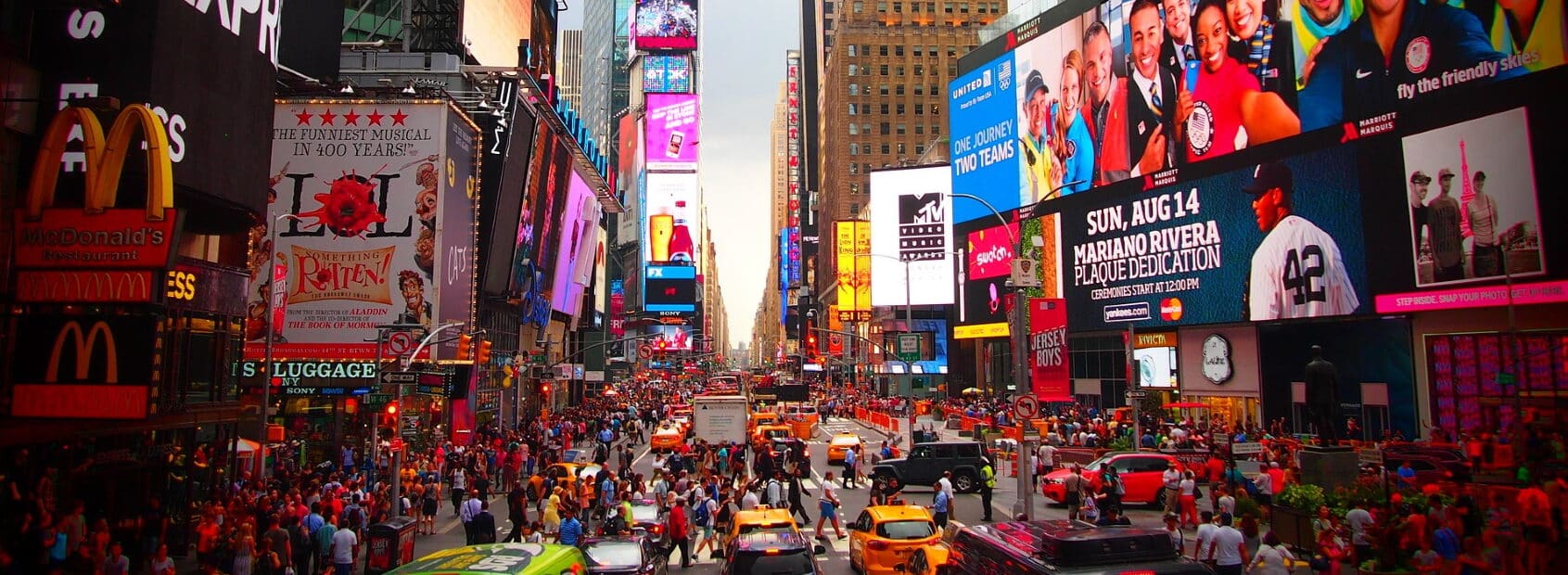

Chaos to the streets. Last mile deliveries could seriously hamper e-commerce growth.

René Repko
De Toekomst van Retail | New RetailCitizens living in the already crowded big cities in Western economies have witnessed a change in the past few years. Delivery trucks parking on dangerous places. Way more traffic from DHL, UPS and others delivering e-commerce parcels, with more pollution from those trucks. Huge delivery hubs are being built near city centers on land where otherwise housing projects could have been developed. Some even attribute increased traffic jams, congested highways and fatal accidents to e-commerce delivery.
Chaos in New York City
The immense growth of e-commerce has significant upsides: many new jobs, the sheer convenience of ordering products with same day delivery, and not paying more. But there are some serious and growing disadvantages. The growing possibility that the city we live in, where our kids bike to school, and where we would like to breath some fresh air and safely move from one place to another, is getting less attractive. E-commerce has definitely a trade-off, and it’s not just its inefficiency and price tag.
The New York Times recently reported some astonishing facts on the sheer numbers of e-commerce delivery in New York City:
- 1.5 million packages are being delivered daily to consumers, this tripled in the last 8 years
- 471,000 parking violations from delivery trucks in 2018, 34% up from 2017
- 2 million square feet of warehouse is being built by Amazon and others
One in eight US citizens is delivered something which they bought online. And this number is expected to double within five years. Some other data from McKinsey and Conveyco, regarding deliveries:
- It is estimated that 70-80% will be delivered via delivery networks, rather then pick up in store
- 63% of online shoppers cite excessive shipping fees as a reason that they have cancelled a purchase
- 74% of online shoppers say that free shipping is one of the most important factors at checkout. (Source)
- For online retailers, the average cost to fulfil an order is 70% of the average order value. (Source)
The ultimate equilibrium
To a large extent the tech giants have driven change in consumer behaviour. Channel shift is everywhere and so is the growth of Uber and Lyft cars, food delivery scooters and e-commerce trucks. We love it. In US and EU economies the online retail share hovers now around 10-15%. Nobody knows what the ultimate equilibrium, the optimal ratio, could become. With online food retail taking off and the continuous growth of online fashion retail, it is easy to forecast 25-30% online retail share in just 5-8 years. Add up easy returns, for some categories in the 30-50% bracket, and anyone can predict the extreme pressure this creates to our city centers and neighbourhoods.
The trade-off is clear and present: this means a further significant increase in traffic and thus in emissions, with more public space being used as a private warehouse. Amazon, UPS, DHL and others are building fulfilment centers in or near residential areas like the Bronx, Queens and Brooklyn. We see this happening in Europe as well, just travel through the suburbs of London, Paris and Amsterdam. Operating companies are even building three story warehouses, close to city centers.
Too cheap, ineffective and chaos in the streets
Something definitely needs to change. Already home delivery costs are not being fully charged to customers: only 80% of the overall delivery cost are being paid by consumers. So home delivery is too cheap, it is clearly ineffective and it starts to create chaos in the streets. Most companies and specialists state that current delivery models are not sustainable for full scale implementation. With the fast growth of e-commerce a reinvention of last mile delivery in the coming years is imminent.
Companies are working on parallel trajectories. A no brainer: there will be a lot of effort to shrink packaging, making it lighter, and reducing obsolete spaces in boxes. More difficult already and not that easy for every Western economy: operators will need to invest in electrical trucks and electrical cargo bikes, City Councils might even enforce this to local dispatchers. Below online food delivery, with electric vans, in Amsterdam by Picnic.
If possible boats and bikes will be used as an additional way of getting into city centers, as is happening in Amsterdam already. Neighbourhood convenience stores are doubling as a pick up spot. Supermarkets will add smart locker systems at the entrance, helping efficiency as they are already being supplied multiple times per day. New housing apartments will be built with locker boxes and storage rooms, as seen below in the picture of a Chinese apartment building.
New smart technology will help companies to coordinate and increase efficiency by consolidating drop offs. It is likely that City Councils (with more green and friendly policies like Amsterdam, San Francisco, London and Paris) will tax transport of non electrical trucks and might enforce night time delivery for businesses. Cities will develop new offloading areas by using regular parking spaces. All and all impressive, but possibly not transformative enough.
Same day delivery of a single pack Oreo is crazy
Evidently most of these trajectories will increase delivery related opex and capex for companies. It is impossible to envision that this change will happen at present online delivery fee levels (let alone free delivery). In every scenario there will be a significant increase of the cost of last mile delivery which the consumer is going to pay for. Profitability of e-commerce is already strained.
Same day delivery of a single pack Oreo is crazy, with or without a Prime kind of subscription scheme. Ultimately if consumers have to pay the real and increasing cost of e-commerce delivery the growth would hamper.
Amazon is in pole position
Amazon is, as always, in pole position to develop new delivery technology, as their shipping cost balloon. It is expected that Amazon is spending $35bn in 2019 on shipping. The reported 2019 Q3 shipping costs were up 46% yoy, whereas online sales “only” grew 22%. Ouch. New technology like Scout robot debuted early in 2019.
And if regulators are positive we might see delivery drones within 5 years. Amazon has been operating its Flex program, an Uber like delivery service, and it created a small business program that lets anyone run their own delivery fleet (normal economy cars might be friendlier than deliver trucks).
If non-exist, we would invent stores.
It is now cheaper and easier to order online than to go to a store. The question is not if this will change, but when. If e-commerce companies are not able to develop sustainable and consumer friendly delivery they might loose the big metropolitan city centers. Which is a market too big too fail. Customers have become accustomed to free or discounted delivery. They will go cold turkey.
If stores would not exist, they would definitely be invented as a new, efficient and transformational alternative. Is history in the making?

René Repko
De Toekomst van Retail | New RetailRené Repko is één van Nederlands meest vooraanstaande retail marketeers. Al meer dan 15 jaar...
Offerte opvragen Bekijk het profiel